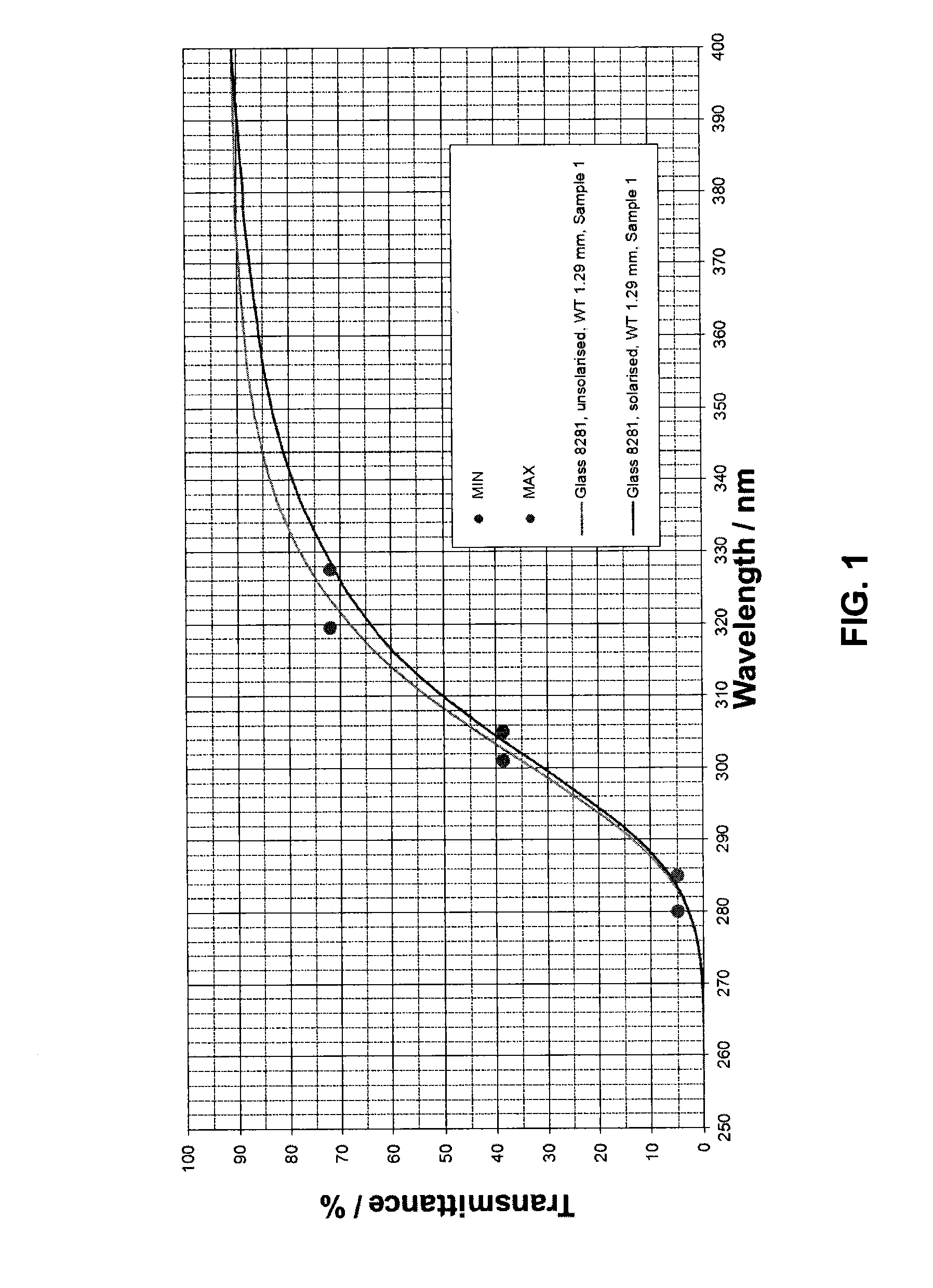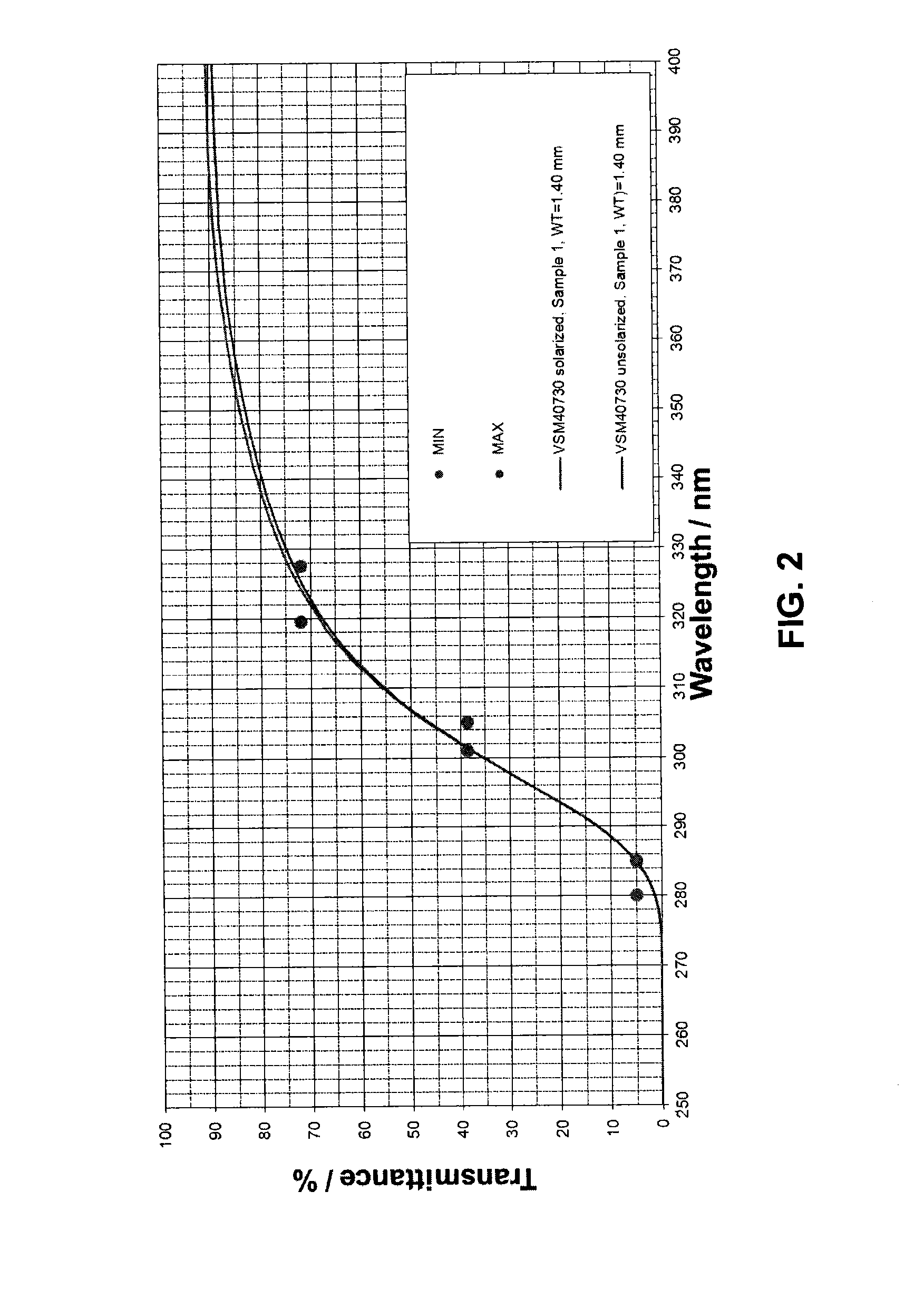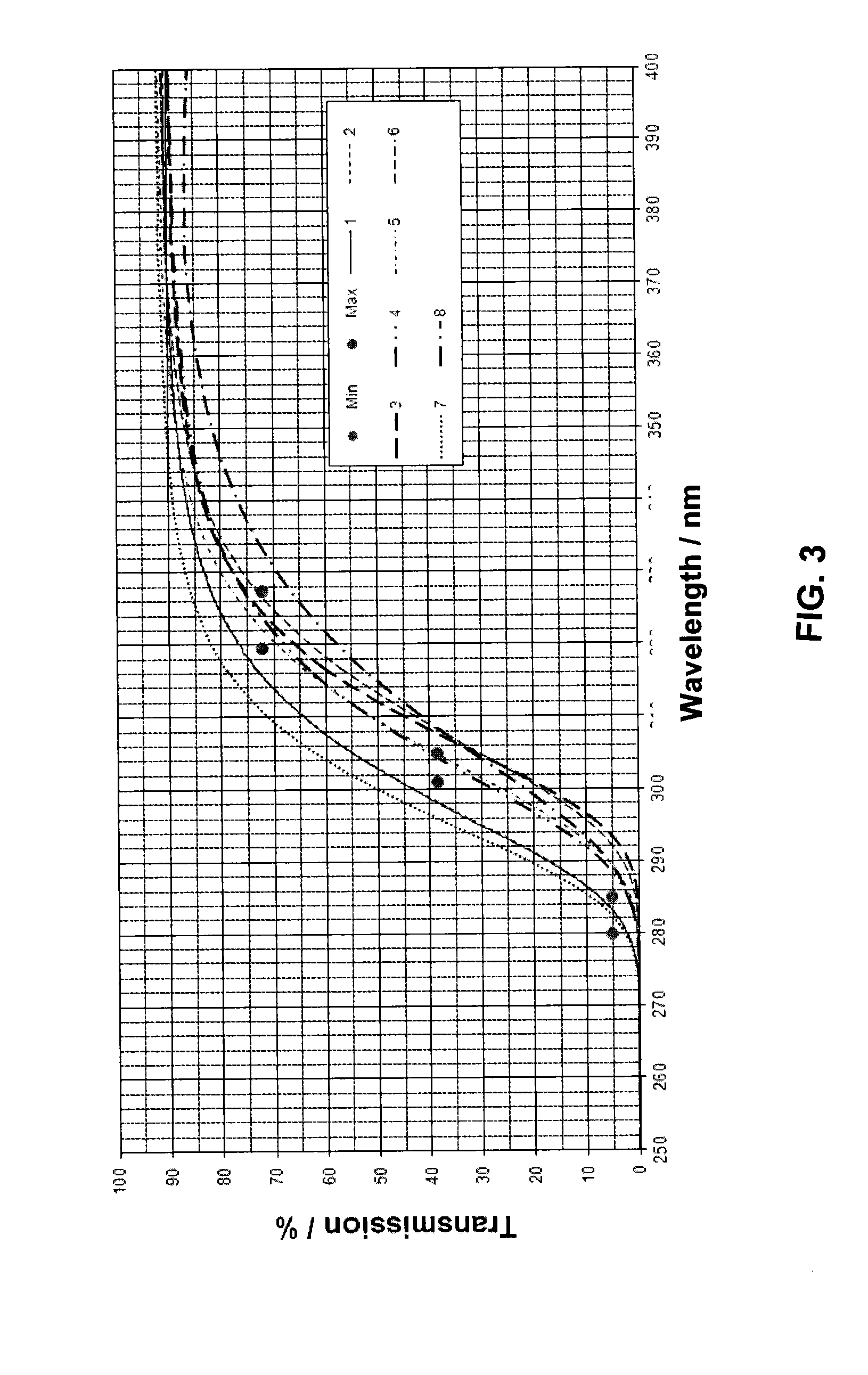Solarization-resistant borosilicate glass and use thereof for production of glass tubes and lamps and in irradiation units
a technology of solarization resistance and borosilicate glass, which is applied in the direction of electric discharge lamps, lighting and heating apparatus, instruments, etc., can solve the problems of unsuitable short-wave light transmission distribution, unsatisfactory results for many applications, and insufficient solarization resistan
- Summary
- Abstract
- Description
- Claims
- Application Information
AI Technical Summary
Benefits of technology
Problems solved by technology
Method used
Image
Examples
Embodiment Construction
[0031]In FIGS. 1 to 3, for various glass samples, the profile of the transmission in percent was plotted over the wavelength range from 250 to 400 nm.
[0032]FIG. 1 shows the transmission profile of a glass sample according to the prior art (applicant's glass type 8281). The thickness of the glass sample was 1.29 mm. In the unirradiated state (the upper curve in FIG. 1), the transmission curve runs between the pairs of points for the target values, i.e. the specified transmission values are achieved at the desired wavelengths. The sample was irradiated with UV light from a UV radiator for a period of 15 hours. The UV radiator comprised a Philips HOK / 4 lamp (HOK 4 / 120 high-pressure mercury lamp). The distance of the lamp from the sample was 7 cm. The principal emission of the lamp was at 365 nm; the irradiation intensity at 200-280 nm at distance 1 m was 850 μW / cm2. The second curve shows the profile of the transmission curve after UV irradiation (the lower curve in FIG. 1). It is clea...
PUM
| Property | Measurement | Unit |
|---|---|---|
| wavelength range | aaaaa | aaaaa |
| wavelength range | aaaaa | aaaaa |
| wavelength range | aaaaa | aaaaa |
Abstract
Description
Claims
Application Information
 Login to View More
Login to View More - R&D
- Intellectual Property
- Life Sciences
- Materials
- Tech Scout
- Unparalleled Data Quality
- Higher Quality Content
- 60% Fewer Hallucinations
Browse by: Latest US Patents, China's latest patents, Technical Efficacy Thesaurus, Application Domain, Technology Topic, Popular Technical Reports.
© 2025 PatSnap. All rights reserved.Legal|Privacy policy|Modern Slavery Act Transparency Statement|Sitemap|About US| Contact US: help@patsnap.com



